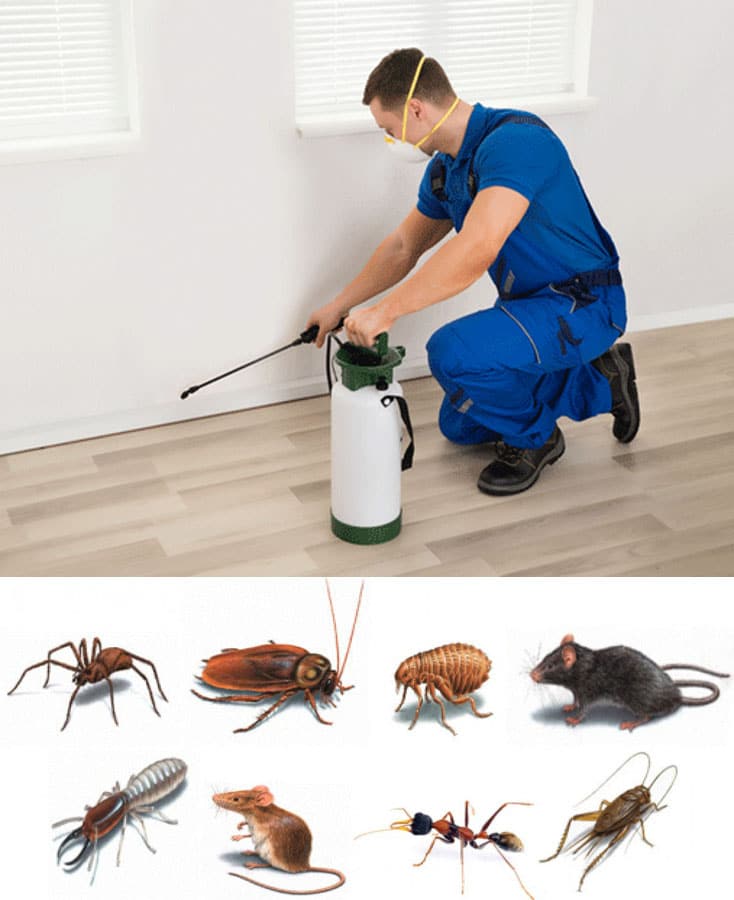Enjoy top-rated Pest Control for guaranteed pest prevention to keep your home safe.
Enjoy top-rated Pest Control for guaranteed pest prevention to keep your home safe.
Blog Article
Eco-Friendly Parasite Control Approaches for Taking Care Of Wildlife in Urban Locations
Urban areas often discover themselves at the intersection of human activity and wildlife, leading to one-of-a-kind challenges in bug administration. These approaches not only protect the atmosphere but likewise improve area engagement in wild animals monitoring. As urban populaces continue to grow, recognizing the characteristics of wildlife communications becomes progressively essential.
Recognizing Urban Wildlife Characteristics
Understanding Urban Wildlife Characteristics is essential for establishing effective and environmentally friendly parasite control techniques. Urban locations are significantly ending up being environments for different wildlife species, driven by elements such as environment fragmentation, food accessibility, and human advancement. Acknowledging these characteristics permits for a nuanced method to pest administration that lines up with environmental principles.
Urban wildlife typically includes varieties such as raccoons, squirrels, and birds, which adapt to city environments, locating niches in green rooms, parks, and even houses. Their visibility can result in disputes with human beings, particularly when they exploit personnels for food and shelter. Comprehending the actions and ecological roles of these varieties notifies strategies that reduce negative interactions while promoting biodiversity.
Additionally, recognizing the interdependencies within metropolitan ecosystems helps in recognizing vital locations for environment conservation and repair. This understanding contributes to the development of incorporated bug administration (IPM) techniques that think about the ecological equilibrium, therefore lowering reliance on harmful chemicals. By cultivating coexistence between humans and city wildlife, cities can develop healthier atmospheres that profit both homeowners and neighborhood ecosystems, leading the way for lasting urban living.
Natural Repellents and Deterrents
Natural repellents and deterrents offer a sustainable choice to standard bug control methods by utilizing the power of nature to keep unwanted types away. These environment-friendly remedies typically make use of plant-based components, necessary oils, and various other normally occurring substances that deter parasites without harming the setting.
One efficient natural repellent is peppermint oil, which is understood to push back rats and pests. Its solid aroma is unpleasant to numerous bugs, making it a preferred choice for city setups. Likewise, vinegar and citrus peels can act as deterrents, as their strong smells are commonly unattractive to numerous wildlife.
Furthermore, diatomaceous planet is an all-natural powder that can be spread in locations vulnerable to parasite task, successfully drying out and discouraging insects without presenting dangers to non-target types. Additionally, garlic sprays and neem oil are recognized for their capability to fend off a variety of pests, consisting of both insects and larger wildlife.
Carrying out these natural repellents not just minimizes reliance on chemical pesticides however likewise promotes a much healthier city ecosystem, cultivating an extra well balanced coexistence between humans and wildlife. By using these strategies, urban locations can effectively handle bug populations while minimizing environmental impact.
Habitat Adjustment Techniques
Efficient habitat adjustment strategies play a crucial duty in lasting insect management by modifying the atmosphere to make it less favorable to pest infestations. By understanding the environmental dynamics of metropolitan locations, residential or commercial property proprietors can implement tactical alterations that hinder bugs while promoting biodiversity.
(Cockroach Control)One main strategy involves keeping correct sanitation. This consists of routine waste elimination, protecting trash can, and getting rid of standing water to decrease reproducing websites for bugs and rats. Furthermore, landscape design techniques such as choosing indigenous plants can boost ecological balance, giving habitats for valuable microorganisms while minimizing sources for pests.
An additional essential method is to secure entry points in structures. Checking and fixing cracks in structures, wall surfaces, and home windows can considerably minimize insect accessibility. Additionally, developing physical barriers, such as fences or plant barriers, can hinder wild animals motion right into human-inhabited areas.
Integrated Bug Management Practices
Building upon environment alteration strategies, integrated parasite administration (IPM) practices use a holistic method to managing bug populations while decreasing environmental impact. IPM integrates numerous techniques, consisting of biological, social, mechanical, and chemical controls, to achieve efficient bug monitoring.
Organic control includes the introduction of all-natural killers or bloodsuckers to lower bug populations. Social techniques, such as plant turning and sanitation, disrupt pest life cycles and decrease their habitats - Pest control service. Mechanical controls, like catches and obstacles, give instant alleviation from pest pressures without chemical treatment
Chemical controls are utilized as a last hope, focusing on targeted applications that limit harm to non-target varieties and the atmosphere. The option of eco-friendly pesticides, when essential, is integral to the IPM framework. In addition, monitoring bug populaces and examining prospective damages assists inform decision-making, ensuring that interventions are prompt and efficient.
Community Participation and Education

(Wildlife removal Port Charlotte)Workshops and educational sessions can furnish locals with understanding concerning indigenous species, environment preservation, and effective non-toxic insect monitoring strategies. Collaboration with schools, local organizations, and government firms additionally boosts instructional outreach, making certain that vital info gets to varied audiences.
Furthermore, community-led efforts, such as neighborhood clean-up days and environment repair tasks, not just advertise biodiversity however likewise strengthen neighborhood connections. Pest Control. By urging homeowners to share their experiences and observations, areas can create targeted approaches that address specific local insect concerns
Including Bat Removal responses from citizens into pest monitoring intends allows a much more responsive and adaptive strategy to wild animals obstacles. Eventually, notified and involved areas are vital to accomplishing long-term success in eco-friendly pest control, bring about much healthier city settings that appreciate both human and ecological requirements.

Verdict
In conclusion, environmentally friendly bug control approaches offer sustainable services for handling city wildlife. By focusing on environment alteration, using natural repellents, and implementing incorporated parasite monitoring techniques, communities can cultivate an unified conjunction with local animals.
Report this page